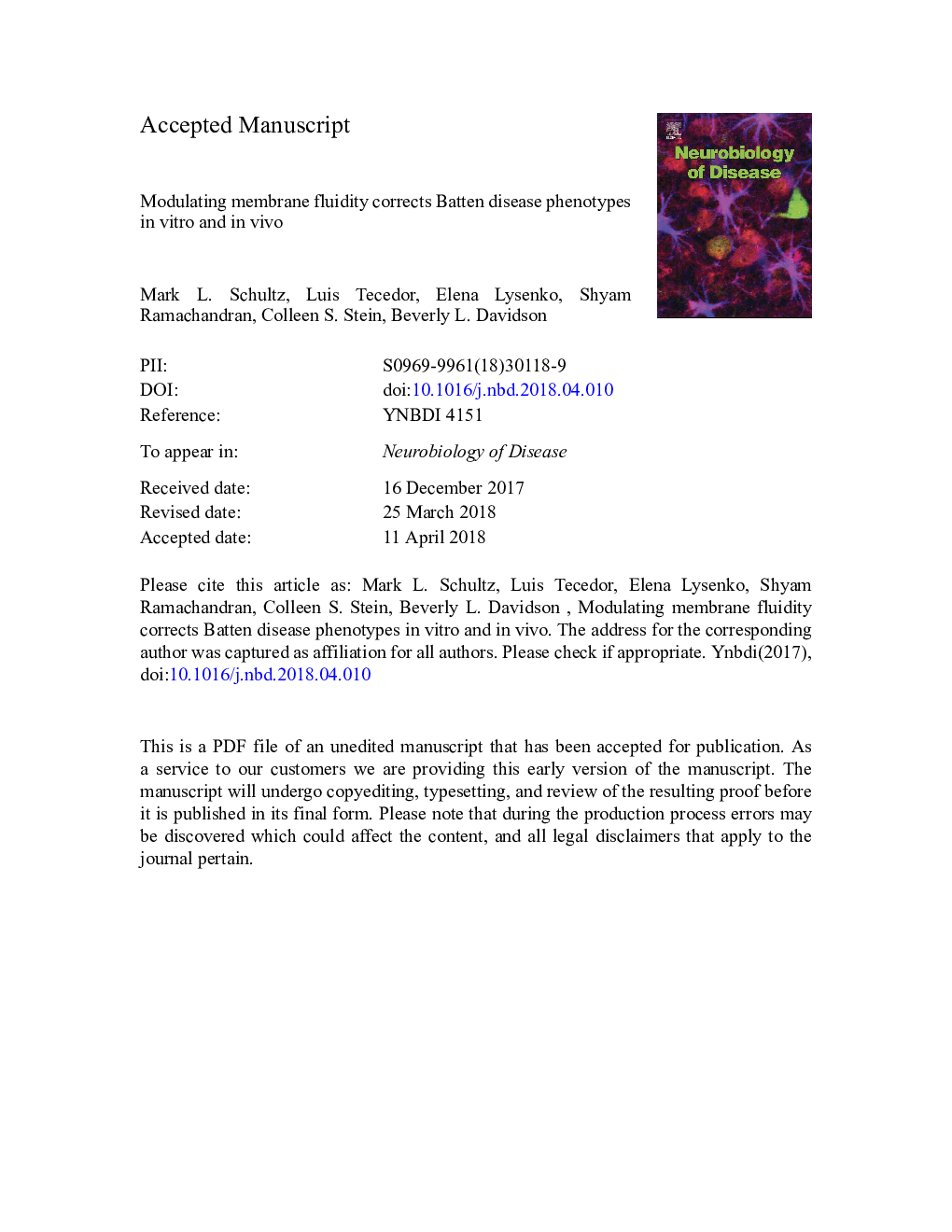| کد مقاله | کد نشریه | سال انتشار | مقاله انگلیسی | نسخه تمام متن |
|---|---|---|---|---|
| 8686377 | 1580605 | 2018 | 46 صفحه PDF | دانلود رایگان |
عنوان انگلیسی مقاله ISI
Modulating membrane fluidity corrects Batten disease phenotypes in vitro and in vivo
دانلود مقاله + سفارش ترجمه
دانلود مقاله ISI انگلیسی
رایگان برای ایرانیان
کلمات کلیدی
موضوعات مرتبط
علوم زیستی و بیوفناوری
علم عصب شناسی
عصب شناسی
پیش نمایش صفحه اول مقاله

چکیده انگلیسی
The neuronal ceroid lipofuscinoses are a class of inherited neurodegenerative diseases characterized by the accumulation of autofluorescent storage material. The most common neuronal ceroid lipofuscinosis has juvenile onset with rapid onset blindness and progressive degeneration of cognitive processes. The juvenile form is caused by mutations in the CLN3 gene, which encodes the protein CLN3. While mouse models of Cln3 deficiency show mild disease phenotypes, it is apparent from patient tissue- and cell-based studies that its loss impacts many cellular processes. Using Cln3 deficient mice, we previously described defects in mouse brain endothelial cells and blood-brain barrier (BBB) permeability. Here we expand on this to other components of the BBB and show that Cln3 deficient mice have increased astrocyte endfeet area. Interestingly, this phenotype is corrected by treatment with a commonly used GAP junction inhibitor, carbenoxolone (CBX). In addition to its action on GAP junctions, CBX has also been proposed to alter lipid microdomains. In this work, we show that CBX modifies lipid microdomains and corrects membrane fluidity alterations in Cln3 deficient endothelial cells, which in turn improves defects in endocytosis, caveolin-1 distribution at the plasma membrane, and Cdc42 activity. In further work using the NIH Library of Integrated Network-based Cellular Signatures (LINCS), we discovered other small molecules whose impact was similar to CBX in that they improved Cln3-deficient cell phenotypes. Moreover, Cln3 deficient mice treated orally with CBX exhibited recovery of impaired BBB responses and reduced autofluorescence. CBX and the compounds identified by LINCS, many of which have been used in humans or approved for other indications, may find therapeutic benefit in children suffering from CLN3 deficiency through mechanisms independent of their original intended use.
ناشر
Database: Elsevier - ScienceDirect (ساینس دایرکت)
Journal: Neurobiology of Disease - Volume 115, July 2018, Pages 182-193
Journal: Neurobiology of Disease - Volume 115, July 2018, Pages 182-193
نویسندگان
Mark L. Schultz, Luis Tecedor, Elena Lysenko, Shyam Ramachandran, Colleen S. Stein, Beverly L. Davidson,